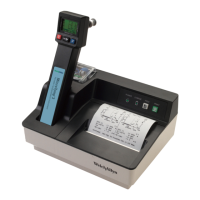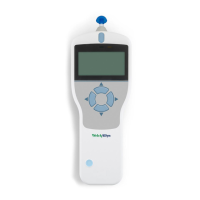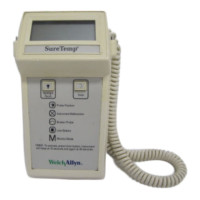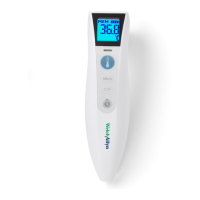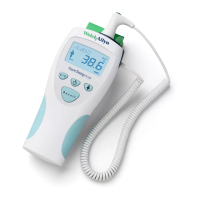l structural defect
l blood, effusion, foreign body, occlusion, inflammation, or growth in
the ear canal
l distorted or absent tympanic membrane landmarks
@
@
Audiometric Screening
Audiometric testing is not very sensitive to many pathological con-
ditions of the middle ear. Nevertheless, inclusion of audiometric
screening in the screening protocol can be helpful in detecting
middle ear disease. In addition, the inclusion of audiometry in the
screening protocol allows for the detection of sensorineural hearing
loss.
The audiometric screen typically consists of the presentation of tonal
stimuli with frequencies of 1000, 2000, and 4000 Hz at 20
dB
Hearing
Level. Frequently a fourth frequency, 500 Hz, is included. If the
patient fails to respond to one or more stimuli, the audiometric screen
should be repeated, either on site or at a later date. Alternatively, a
more thorough audiometric evaluation could be conducted.
@@
Peak (Ya) Too Low
When static admittance (Peak Ya) is abnormally low (see normal
boxes on
MicroTymp)
a retest using the entire protocol should be
administered after 4-6 weeks. Only upon two consecutive occurrences
of low static admittance should a medical referral be recommended,
provided that the abnormal result is not accompanied by other
abnormalities.
NOTE: When the peak is too high in the presence of normal hearing,
no medical referral is necessary,
@
Volume
(+
200 Vea) Too Large
The presence of a flat tympanogram accompanied by a large ear
canal volume
(
S1.5
cc in adults or
>l.O
cc in preschool aged
children) is evidence of a tympanic membrane perforation and
warrants an immediate referral.
00
Gradient (Width) Too Wide
When tympanometric gradient is abnormal,
(
> 114
daPa
for adults
and > 151
daPa
for preschool aged children), a retest using the
entire protocol should be administered after 4-6 weeks. Only upon
two consecutive occurrences of abnormal results should a medical
referral be recommended, provided that the abnormal result is not
accompanied by other abnormalities.
33
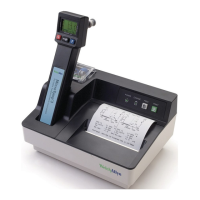
